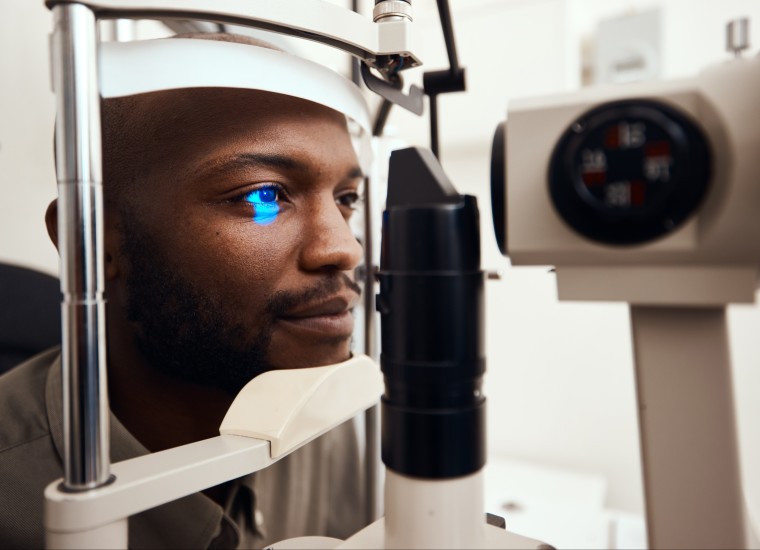All Categories
Featured
Persistent eye conditions, such as glaucoma, macular deterioration, and diabetic person retinopathy, call for recurring care to preserve vision and maintain quality of life. Efficient monitoring of these problems includes a combination of clinical therapy, way of life changes, and routine monitoring. Here's exactly how people can take fee of their eye health and wellness and manage persistent eye conditions properly.
Among the most important steps in managing persistent eye problems is adhering to your doctor's referrals. This includes:
![]()
Utilizing recommended medicines: Take eye declines, oral drugs, or shots as guided to regulate symptoms or sluggish illness progression.
Participating in routine exams: Frequent check outs to an eye treatment specialist allow for timely changes to your treatment plan and early discovery of modifications in your problem.
Going through required treatments: Some conditions, like glaucoma or retinal conditions, might call for surgical or laser interventions to stop further damage.
Your overall wellness significantly affects your eye wellness. Taking on a healthy and balanced lifestyle can lower the threat of issues and improve outcomes.
Eat a well balanced diet plan: Nutrient-rich foods, such as leafy eco-friendlies, fish high in omega-3 fats, and fruits, can sustain eye wellness.
Workout frequently: Exercise enhances blood flow, which profits the eyes by guaranteeing they receive adequate oxygen and nutrients.
Manage chronic conditions: If you have diabetes, hypertension, or other systemic conditions, maintain them controlled to avoid aggravating eye concerns.
Prevent smoking: Smoking boosts the risk of establishing or worsening chronic eye conditions, consisting of macular degeneration and cataracts.
![]()
Avoiding more damage to your eyes is crucial in managing chronic problems:
Put on safety eyewear: Use sunglasses with UV security to protect your eyes from dangerous rays and minimize the threat of difficulties.
Restriction display time: Too much screen exposure can stress your eyes. Practice the 20-20-20 regulation-- consider something 20 feet away for 20 seconds every 20 minutes.
Preserve proper lighting: Prevent straining your eyes by making sure sufficient illumination when working or reviewing.
Understanding your problem empowers you to make informed choices concerning your care. Ask your eye treatment carrier about:
The progression and potential results of your condition.
Indicators and signs and symptoms that call for immediate interest.
Available resources, such as assistance teams and educational materials.
![]()
Dealing with a persistent eye condition can be psychologically difficult. Consider:
Joining support system: Sharing experiences with others in similar scenarios can provide comfort and useful tips.
Speaking to a therapist: Professional assistance can assist you manage the emotional effect of vision changes.
Final Thought
Handling persistent eye conditions calls for a positive and extensive strategy. By following medical advice, adopting a healthy and balanced way of living, safeguarding your eyes, and seeking support, you can properly browse the difficulties of these conditions and preserve your vision. Regular communication with your eye treatment carrier is important to ensure your monitoring plan stays effective and tailored to your demands.
- Comply With Medical Suggestions and Therapy Strategies
Among the most important steps in managing persistent eye problems is adhering to your doctor's referrals. This includes:

Utilizing recommended medicines: Take eye declines, oral drugs, or shots as guided to regulate symptoms or sluggish illness progression.
Participating in routine exams: Frequent check outs to an eye treatment specialist allow for timely changes to your treatment plan and early discovery of modifications in your problem.
Going through required treatments: Some conditions, like glaucoma or retinal conditions, might call for surgical or laser interventions to stop further damage.
- Maintain a Healthy Way Of Living
Your overall wellness significantly affects your eye wellness. Taking on a healthy and balanced lifestyle can lower the threat of issues and improve outcomes.
Eat a well balanced diet plan: Nutrient-rich foods, such as leafy eco-friendlies, fish high in omega-3 fats, and fruits, can sustain eye wellness.
Workout frequently: Exercise enhances blood flow, which profits the eyes by guaranteeing they receive adequate oxygen and nutrients.
Manage chronic conditions: If you have diabetes, hypertension, or other systemic conditions, maintain them controlled to avoid aggravating eye concerns.
Prevent smoking: Smoking boosts the risk of establishing or worsening chronic eye conditions, consisting of macular degeneration and cataracts.
- Safeguard Your Eyes

Avoiding more damage to your eyes is crucial in managing chronic problems:
Put on safety eyewear: Use sunglasses with UV security to protect your eyes from dangerous rays and minimize the threat of difficulties.
Restriction display time: Too much screen exposure can stress your eyes. Practice the 20-20-20 regulation-- consider something 20 feet away for 20 seconds every 20 minutes.
Preserve proper lighting: Prevent straining your eyes by making sure sufficient illumination when working or reviewing.
- Inform Yourself
Understanding your problem empowers you to make informed choices concerning your care. Ask your eye treatment carrier about:
The progression and potential results of your condition.
Indicators and signs and symptoms that call for immediate interest.
Available resources, such as assistance teams and educational materials.
- Look For Emotional Assistance

Dealing with a persistent eye condition can be psychologically difficult. Consider:
Joining support system: Sharing experiences with others in similar scenarios can provide comfort and useful tips.
Speaking to a therapist: Professional assistance can assist you manage the emotional effect of vision changes.
Final Thought
Handling persistent eye conditions calls for a positive and extensive strategy. By following medical advice, adopting a healthy and balanced way of living, safeguarding your eyes, and seeking support, you can properly browse the difficulties of these conditions and preserve your vision. Regular communication with your eye treatment carrier is important to ensure your monitoring plan stays effective and tailored to your demands.
Latest Posts
Why Consistent Car Maintenance at Montclare Auto Repair Saves You Money
Published en
1 min read
Smooth Light Weight Aluminum Gutters: The Smart Option for Your Home
Published en
1 min read
Explore Top Car Repair Solutions at Montclare Auto Repair – Drive with Confidence
Published en
1 min read
More
Latest Posts
Why Consistent Car Maintenance at Montclare Auto Repair Saves You Money
Published Jun 01, 25
1 min read
Smooth Light Weight Aluminum Gutters: The Smart Option for Your Home
Published May 27, 25
1 min read
Explore Top Car Repair Solutions at Montclare Auto Repair – Drive with Confidence
Published May 27, 25
1 min read